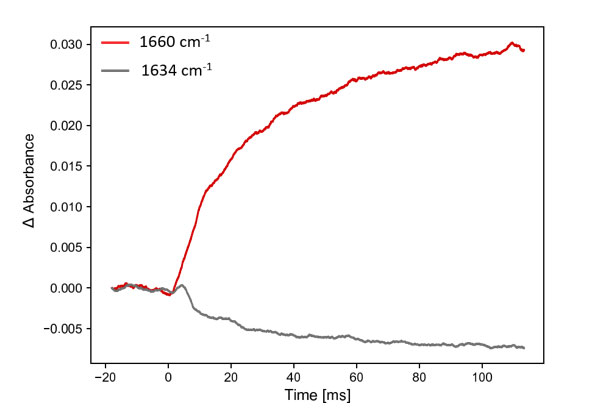Sub-10 ms stopped-flow in the mid-IR
Latest updated: October 8, 2024Improvements have been made in FT-IR technology and the use of step scan acquisition. However, the main limitation of such set-ups for rapid kinetics is often the time resolution of the FT-IR spectrometer. The fastest acquisition speed available is often in the 30-50 ms range, a speed much slower than the few milliseconds dead time achieved with the Biologic SFM stopped-flow. This means reactions shorter than 100 ms cannot be followed using conventional FT-IR instruments. To overcome issues related to the acquisition speed and sensitivity of FT-IR spectrometers, a new type of IR spectrometer based on dual comb spectroscopy has been introduced to the market. The IRis-F1 spectrometer from IRsweep can measure IR spectra on a submilisecond time scale without compromising sensitivity.
The coupling of a BioLogic SFM to the Iris-F1 is very easy, as only standard SFM accessories are necessary to connect the two devices. To illustrate the performance of stopped-flow in mid-IR, the structural change from beta-sheets to alpha-helix in β-lactoglobulin as described by Gerwert et al. 1. can be used.

Most of the reactions occur in the first 20 ms which make this reaction impossible to follow with FT-IR .
More technical details and information about the reaction can be found in AN38
Spectra were continuously acquired every 4 µs for 130 ms and the kinetics are shown below.
1 : Kauffmann, E., Gerwert, K. et al. (2001). PNAS, 98(12), 6646–6649




